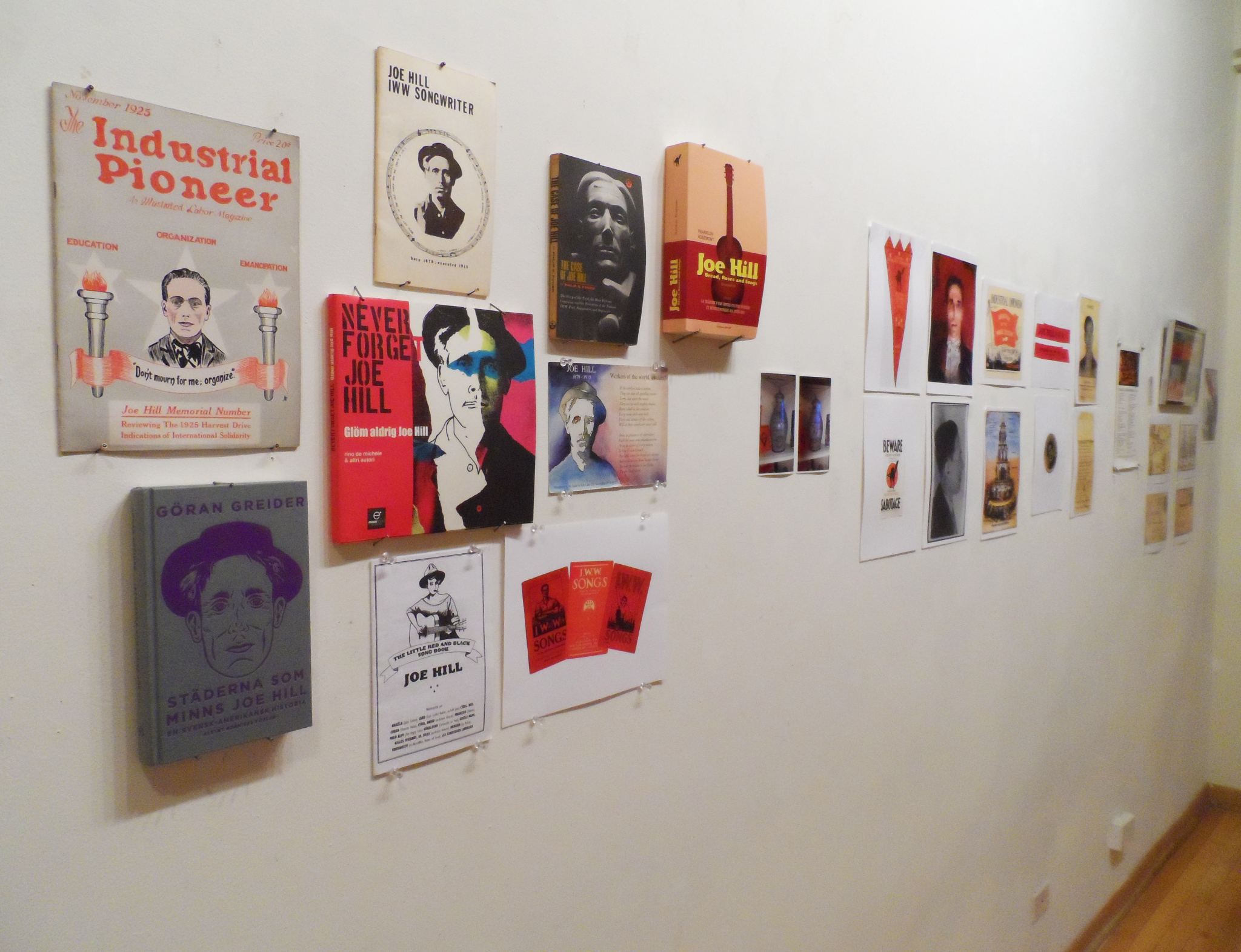For twenty-three months, Uri-Eichen has been celebrating the life of Swedish-American labor activist Joseph Hillstrom, better known as Joe Hill, in a series of exhibits. The previous exhibits had highlighted artists whose work and ideals were reminiscent of Hill’s. “Joe Hill: Part Five” fell a few days before the centennial anniversary of death, November 19, and focused entirely on his life, work, and music.
Joe Hill has also been described as “a cornerstone of American protest music,” a phrase that came from Bob Dylan by way of William Adler, the author of what Bucky Halker, the evening’s musical act, called the preeminent biography on Hill’s life. Adler, who was present at the event, finds Hill particularly fascinating because of his complicity in the construction of his own myth as a martyr and as a man who may have been able to prevent his death had he chosen to.
According to Adler, one of the major draws to writing about Hill was the monumental task of separating myth from the truth. The exhibit reveled in this ambiguity, remembering both the man and the stories told about him. One of the lesser-known of these stories is one of a dedicated musician; in addition to the cynical protest songs and a mix of vaudeville, “tin pan alley,” and parodies of popular songs, Hill composed love songs. A few were published during his life; others were found only after his death. One of the less-true of the stories is that Hill himself, once positioned in front of the rifles of his executioners, gave the final order to fire.
Preceding his execution was a trial universally described as unfair by everyone present at the gallery. Some even went as far as to describe it as a political execution. Joseph Hillstrom had been accused of the murder of two men he did not know in what police originally described as a revenge killing, but later revised to ‘botched robbery.’ According to Hill, the bullet wound that aided the prosecution was the result of a quarrel with the husband of a woman he was involved with. In order to protect her honor, he refused to name the woman.
When the main witness first saw Hill, he said, “That’s not him at all.” However, that witness, who was thirteen, eventually identified him, and the jury found Hill guilty. Hill was a labor organizer as well as an immigrant, making him, according to an Uri-Eichen gallery attendee, a scary radical foreigner in the eyes of the authorities of Utah.
The Illinois Labor Historical Society contributed displays about Hill’s historical significance, such as a page of a petition asking for Hill’s clemency. Attempts to prevent Hill’s death came from as far as Australia and Sweden and as high up as President Woodrow Wilson. The governor of Utah refused to commute his sentence; in 1983, another governor rebuffed a request for a posthumous pardon. According to Seawell, it wasn’t “politically expedient” to admit to what many described as a political execution committed by the state of Utah. To this point, the red caution tape on the gallery’s front windows proclaiming, “Warning: Entering this space could be interpreted as a political act,” seems especially appropriate.
Surrounded by pages of historical documents and descriptions was a miniature coffin painted with a red and black likeness of Hill. The gallery later distributed cards that resembled Hill’s funeral pamphlet, save for the addition of a prompt that attendees were to answer before returning the cards, which are to be placed in the coffin and burned at the Hideout on November 22nd. The prompt was, “Why do you believe ‘Joe Hill Lives’ today?”
The Joe Hill series will conclude with “The Last Chapter: Joe Hill’s Funeral” at The Hideout Inn, 1354 W. Wabanasia Ave. Sunday, November 22, 7pm, doors at 6pm. $10. (773) 227-4433. hideoutchicago.com

